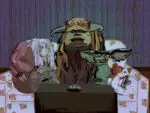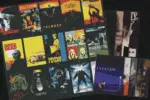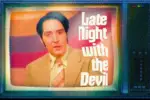From “Night of the Living Dead” to “Train to Busan,” zombies have been featured in films since the early days of cinema. The first dip into the zombie film genre is often credited to Victor Halperin’s “White Zombie,” which came out in 1932. Ever since, filmmakers have used the monster to tell a variety of stories and explore different themes. The history of the zombie is one that predates film but is often unexplored by zombie movie fans.
The modern zombie is loosely inspired by the Vodou zombi, which originated in what is now Haiti. The Vodou religion was created by enslaved Africans who were forcibly brought to Haiti to work on plantations. These original zombis looked nothing like the modern-day ones. They were emotionless shells at the mercy of their masters, and mirrored the everyday horrors of enslavement. Enslaved people feared a fate worse than life, they feared that even in death they would not be free and would be trapped as zombis. The myth further evolved when the United States occupied Haiti in the early 20th century, and various men brought back their exaggerated tales of Vodou. For example, William Seabrook’s “The Magic Island” depicts Vodou as primal and wicked. Because of “The Magic Island” and other stories of the time, Americans’ views on Haiti, zombis and Vodou evolved into tropic misconceptions largely informed by racial stereotypes and exaggeration.
The zombis were eventually whitewashed with the release of “White Zombie,” which features a man killing the woman he loves to bring her back as a zombie so he can have her forever. The film stereotypes Haitian people and Vodou as backward and superstitious, and demonizes them for helping the white protagonist reanimate his lover.
The birth of the modern zombie, however, can be credited to George Romero and his “Night of the Living Dead,” as well as the rest of the trilogy and follow-up films. With this film, Romero coined the rules that many zombie filmmakers use to this day for their depictions of zombies. They are reanimated corpses who crave human flesh, can only be killed with a blow to the head and are completely autonomous. The creation of this version of the zombie was born out of the necessity to create a catalyst for the rest of the plot.
When the film was released in 1968, Romero used the zombies as a vessel to explore themes surrounding race, as a Black actor named Duane Jones plays the lead character, Ben. Romero consistently stated that race had no effect on his casting choices, and Jones simply gave the best audition. That being said, a movie released during the Civil Rights Movement featuring a Black man stuck in a house full of white people who survives a slew of zombie attacks only to get shot by a sheriff can only be described as a critique of racism in America.
While many of the zombies shown in films now are slightly different from Romero’s original, they pay homage to the version of the monster that Romero created. Oftentimes, the thematic elements of these films underline the realities of the human condition. For instance, “Train to Busan” deals with themes of family and selfishness, “28 Days Later” explores people’s innate fear of the collapse of civilization and “The Girl with All the Gifts” questions science and ethics as they relate to finding a cure. Despite these differing themes, the zombie works as an effective means of intellectual exploration, making it a powerful monster.
The genre has further permeated pop culture through various films that mix genres. Movies like “Zombieland” and “Shaun of the Dead” fuse comedy with horror, creating a more jovial atmosphere. “[Rec]” updates the found footage film sub-genre and brings it to the zombie landscape. “Warm Bodies” takes the Shakespearean story of “Romeo and Juliet” and puts a horrific spin on it. These stories are integral pieces to the legacy that the zombie movie has built, creating more diverse storylines than could have been imagined when Romero released his first zombie film.
The ever-expanding genre of zombie films created a creature that far exceeds the title of monster. From their beginnings in Haitian Vodou to their monstrous legacy on the silver screen, the undead have taken on so much new life. They have been vessels for filmmakers to tell stories. In doing so, zombies become so much more than freakish creatures; they are integral fixtures of the horror genre. Without these zombies, many stories would be left untold, buried in shallow, unmarked graves. These darkly fascinating amalgamations of our worst nightmares put shovels to the earth and bring them back to life.

















